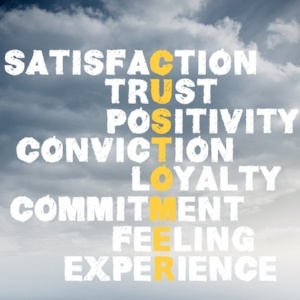
3 Customer Experience Research Methods You Should Explore
 Having a great product or idea is only part of a successful business model. In today’s world of mass consumerism, companies have to also stand out from competitors who offer similar goods and aggressive pricing. To do this, companies are focusing on making every interaction they have with customers a positive one. In this way, customer experience (CX) has become the new branding tool with which companies build customer loyalty and increase market share. But companies can’t just “think” they are providing meaningful touchpoints for their customers. As with most things, perceptions and realities frequently differ, and companies must have a process in place for verifying that the experiences they are providing are actually generating the effects that they want. That process is called “customer experience research” (CXR) and, like other types of market research, it helps companies measure their own practices against specific customer need — in this case, shedding light on how customers really feel about the encounters they are having with a company. Take a look at three customer experience research methods you can use to effectively evaluate the experiences your customers are having with you:
Having a great product or idea is only part of a successful business model. In today’s world of mass consumerism, companies have to also stand out from competitors who offer similar goods and aggressive pricing. To do this, companies are focusing on making every interaction they have with customers a positive one. In this way, customer experience (CX) has become the new branding tool with which companies build customer loyalty and increase market share. But companies can’t just “think” they are providing meaningful touchpoints for their customers. As with most things, perceptions and realities frequently differ, and companies must have a process in place for verifying that the experiences they are providing are actually generating the effects that they want. That process is called “customer experience research” (CXR) and, like other types of market research, it helps companies measure their own practices against specific customer need — in this case, shedding light on how customers really feel about the encounters they are having with a company. Take a look at three customer experience research methods you can use to effectively evaluate the experiences your customers are having with you:
Customer Satisfaction Surveys
Of course, one of the best ways to gauge the quality of your customers’ experiences is by asking them how they feel about them! Your customers’ levels of satisfaction will tell you a lot about how well you are meeting the needs of the people you serve. Customer feedback, especially when directly following an encounter (such as after an online or in-store sale or service call), can help you determine the actions that are working for customers, as well as the ones that aren’t.
Journey Mapping
Journey mapping is a way of documenting the encounters customers have with you. This customer experience research method allows you to quickly identify the points of contact you have with your customers. As opposed to only the quantitative data detailed by customer satisfaction surveys, journey mapping also makes use of other types of data (such as past research data, focus group work, sales numbers, call logs, etc.) so that a more robust picture of your relationship with your customers can emerge. It’s especially beneficial because it can identify the customers you might be losing along the customer journey. You can have customers to survey (thus, making the above customer satisfaction useful), but what about the ones you lost because your website was difficult to navigate or your customer service response was too slow? Objective analysis of your customer touchpoints can highlight the people you might be failing in some way so that you can make adjustments in order to better serve them in the future.
Fieldwork
Fieldwork allows you to witness customer engagement directly instead of relying on secondhand facts. This means you are able to make more objective conclusions about what your company is doing well and not so well (since you are more aware of your own biases and can address them more fully than you might be able to with the biases of others). Interviews, mystery shopping and ethnographic studies are just a few ways to conduct fieldwork. Mystery shopping, specifically, is a particularly informative way to assess the quality of your company’s touchpoints. Unscheduled visits to retail locations and/or listening in on sales and service calls can help you understand what your customers really want and what they’re actually getting when they search for your products, talk to your representatives, review your marketing materials and so forth. Savvy surveillance will enable you to experience what your customers experience and not just what they want to report or what you hope is true.
Ready to Learn More?
The customer experience is one of the biggest predictors of a company’s success in today’s business world. Provide great experiences, and you increase customer trust and loyalty. Provide bad ones, and you do the opposite. Our team at Communications for Research (CFR) can help you pick the best customer experience research method to evaluate your customers’ experiences so that you can gain actionable insights that truly make a difference to your bottom line. Contact us to learn more!
Feel free to also download our complimentary eBook, “The Insider’s Guide to Successfully Using Market Research Online Surveys” for tips on successfully bringing your customer research into the digital world.



